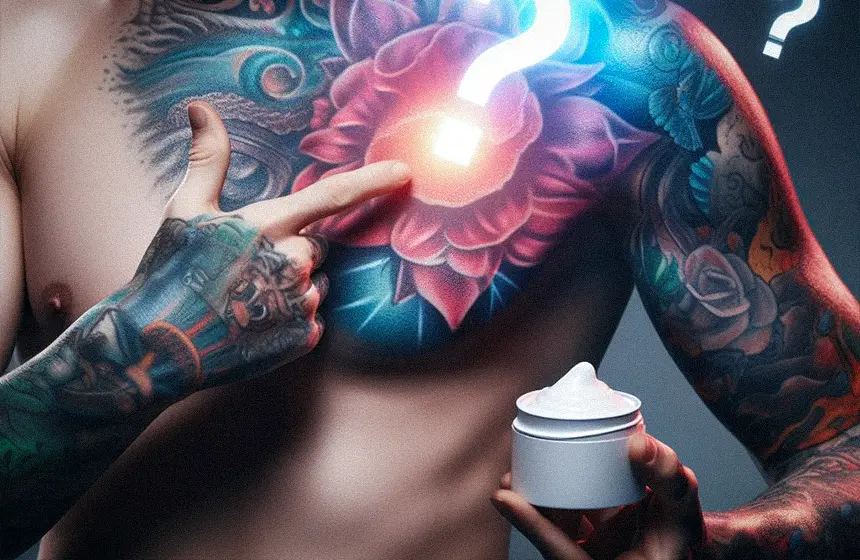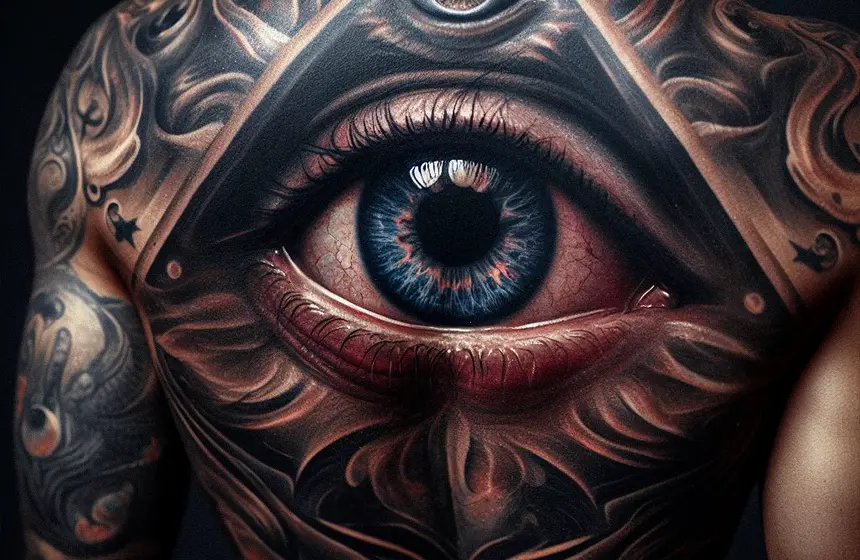Does Numbing Cream Work for Tattoos?
This question often lingers in the minds of those contemplating their first or next tattoo.
Navigating the world of tattoos involves managing discomfort. This article explores the use of numbing creams in tattoo procedures. It offers a comprehensive analysis of their effectiveness, key ingredients, and potential risks. It also dispels common misconceptions about the necessity of pain in tattooing. We aim to equip readers with the knowledge to make informed decisions about their pain management options, promoting a more comfortable tattooing experience.
Key Takeaways
- Numbing creams are effective in reducing pain during tattoo sessions.
- Numbing creams can alleviate the anxiety and stress associated with getting a tattoo.
- Factors such as medical conditions, genetics, chronic pain, lack of sleep, prior injuries, anxiety, stress, or depression can influence the decision to use a numbing cream.
- Proper use of numbing creams can help reduce pain without causing health issues.
Table of Contents
Numbing Cream and Tattoo Procedures
In tattoo procedures, numbing creams play a significant role in managing pain and enhancing the overall experience. These topical anaesthetics, while effective, also carry potential risks that need to be considered.
Numbing Creams and Their Purpose
The application of numbing creams plays a crucial role in tattoo procedures, serving to reduce discomfort and enhance the overall experience significantly. These creams, often containing lidocaine or similar substances, work by blocking pain signals from the nerves, thereby creating a numb sensation.
- They empower those with low pain thresholds to express themselves through body art freely.
- They alleviate common anxieties associated with the tattooing process.
- They transform an uncomfortable experience into a smooth, more enjoyable one.
However, it’s vital to remember that while these creams are generally safe, incorrect usage or personal allergies may lead to complications. Always consult a health professional before use. Numbing creams are your ally in embracing the freedom and artistry that tattoos offer.
Immediate Effects and Risks
A significant proportion of individuals utilizing numbing creams for tattoo procedures report immediate pain relief. However, potential risks such as allergic reactions and improper usage must be considered. While creams containing lidocaine or benzocaine can effectively block pain signals from nerves, allergic reactions, though rare, can occur. Symptoms may include redness, itchiness, or even difficulty breathing. Misuse of numbing creams can also lead to health complications, such as irregular heartbeat or seizures. This is especially true for products containing vasoconstrictors. Therefore, it is vital to follow usage instructions and consult a healthcare professional before using these products. Despite these risks, when used correctly, numbing creams can significantly enhance the tattooing experience by reducing the associated pain.
Effectiveness of Numbing Creams in Tattooing
One’s choice to use numbing creams during tattoo procedures can significantly influence the overall comfort and satisfaction of the tattooing experience. Topical anaesthetics can effectively alleviate the pain and discomfort of needle insertion, creating a more relaxed and comfortable experience.
- Experiencing less pain allows for longer tattoo sessions, resulting in faster completion of intricate designs.
- Reducing pain and anxiety can also enhance the creative process, facilitating better communication with the tattoo artist.
- Moreover, the comfort of numbing creams allows for a more positive recollection of the tattooing experience, encouraging a possible desire for more body art.
Numbing creams, therefore, play a significant role in modern tattoo practices, offering an effective solution for those seeking a less painful tattoo experience.
How to Use Numbing Cream for Tattoos

To maximize the benefits of numbing cream during tattoo procedures, understanding the correct application process is vital. This includes knowing when to apply the cream before the tattooing begins and the necessary waiting period to allow the cream to take effect. The following discussion will provide detailed guidance, ensuring a more comfortable tattooing experience.
Applying Numbing Cream Before a Tattoo
Before embarking on a tattooing session, it is crucial to understand how to apply numbing cream for optimal results and comfort.
To do so, you should:
- Begin by thoroughly cleaning the area where you plan to apply the cream. This will remove any dirt or oils hindering the cream’s effectiveness.
- Apply a generous layer of the cream onto the cleaned skin and cover it with a plastic wrap. This process helps to activate the cream.
- Leave the cream on approximately 45-60 minutes before your tattoo session begins. This will allow sufficient time for the numbing effect to take hold.
Numbing Cream Application Process
Understanding the application process of numbing cream is crucial for maximizing its effectiveness during tattoo sessions. First, clean the area where the tattoo will be placed using a mild soap. Pat it dry before applying a generous layer of the cream. Ensure that the cream covers the entire area to be tattooed, extending a bit beyond for full coverage. Please don’t rub it in completely; leave a thick layer on the skin. Cover it with a plastic wrap to enhance absorption, and leave it on for 45 minutes to an hour before your session. The effect generally lasts for 2-4 hours. Please consult with your tattoo artist before applying the cream, as some may prefer to do it themselves.
Timing and Waiting Period Before Tattooing
Applying numbing cream an hour before the tattoo session is a critical step in ensuring the effectiveness of the pain relief. This allows the cream to penetrate the skin and block the nerve signals that transmit pain.
- The sense of liberation when you can enjoy the artistry of tattooing, free of intense pain, is unparalleled.
- The relief of knowing that the anxiety around the tattooing process can be significantly reduced.
- The freedom to express yourself through body art on your terms without enduring unnecessary discomfort.
Remember to follow the instructions on the numbing cream package. This includes not only the application but the waiting period as well, ensuring the most effective use of the product and a more comfortable tattooing experience.
Pros and Cons of Using Numbing Cream for Tattoos

In considering the use of numbing creams for tattoos, it is essential to weigh the benefits and potential drawbacks. This includes examining the effectiveness of these creams in alleviating tattoo-related discomfort, understanding any potential risks, and considering personal testimonies. A comprehensive analysis will enable individuals to make informed decisions about incorporating numbing creams into their tattooing experience.
Benefits of Numbing Creams in Tattoo Procedures
The use of numbing creams in tattoo procedures presents many benefits and specific considerations, making it a significant aspect of the tattooing process. Numbing creams effectively alleviate the pain and discomfort associated with tattooing, thus aiding in a smoother and less stressful experience.
- They provide a sense of control and freedom, empowering individuals to overcome the fear of pain and focus on the artistic expression of tattoos.
- Numbing creams can help enhance the overall tattooing experience, making it enjoyable rather than daunting.
- They are a boon for people with low pain thresholds who wish to indulge in body art.
However, it’s essential to use these creams responsibly, considering potential allergic reactions or other health considerations. Hence, it’s recommended to consult with a health professional before usage.
Potential Drawbacks and Considerations
Why, despite the noted benefits, might there be reservations about using numbing creams during tattoo procedures? While numbing creams can significantly reduce pain and discomfort, it’s important to acknowledge potential drawbacks.
Over-reliance on these creams can lead to an unnatural tattooing experience, potentially robbing the individual of the traditional rite of passage. Additionally, improper use can cause skin irritations and allergic reactions. Some may also argue that numbing creams interfere with the artist’s work, as the client might be unable to provide accurate feedback on pain levels.
| Pros of Numbing Creams | Cons of Numbing Creams |
|---|---|
| Alleviates pain and discomfort | This can lead to over-reliance |
| Reduces anxiety and stress | May interfere with the artist’s work |
| Enhances overall tattoo experience | This can lead to over-reliance |
| Suitable for low pain tolerance | Risk of allergic reactions |
Personal Experiences and Testimonials
Gathering personal experiences and testimonials about using numbing cream for tattoos can provide a more comprehensive understanding of its pros and cons.
One user described the cream as a “game changer,” significantly reducing the pain and allowing her to relax. However, another user warned that the numbing effect wore off about halfway through their session, leading to discomfort.
- Some individuals reported that numbing cream made the tattooing experience painless, providing a sense of liberation.
- Others found the cream ineffective, stating that it only numbed the skin’s surface and did not alleviate the pain once the needle went deeper.
- A few had minor skin reactions, suggesting a potential allergy to the cream’s ingredients.
Hence, while numbing creams can enhance the tattooing experience for some, others may not find them as effective or may experience side effects.
Alternative Pain Management Options for Tattoos
While numbing creams offer one solution for pain management during tattoo procedures, there exist alternative methods that warrant consideration. These range from over-the-counter medications to natural remedies, each with benefits and drawbacks. To make an informed decision, it is crucial to compare these alternatives to numbing creams, assessing their effectiveness in mitigating the discomfort associated with tattooing.
Other Pain-Relief Methods for Tattoo Procedures
Apart from numbing creams, there are various alternative pain management options available for those undergoing tattoo procedures. These methods provide a sense of freedom and comfort, allowing individuals to enjoy the artistry of tattooing while minimizing discomfort.
- Mindfulness: Mindfulness and deep breathing techniques can help divert attention from the pain and promote relaxation.
- Over-the-counter pain killers: Non-prescription pain relievers, such as ibuprofen, can lessen discomfort an hour before the procedure.
- Distractions: Listening to music, talking to the tattoo artist, or focusing on a visual distraction can significantly lessen pain perception.
Each option works differently for everyone, and choosing the correct method is a personal decision that should align with your comfort level and pain threshold.
Comparing Numbing Creams to Other Pain Management Techniques
How do numbing creams for tattoos compare to other pain management techniques in terms of effectiveness and user comfort? Numbing creams provide an effective solution for pain management during the tattooing process. They are easy to apply and offer a high degree of comfort to the user.
Compared to other methods, numbing creams often come out on top due to their accessibility, affordability, and efficacy. However, it’s important to remember that individual experiences may vary. Here is a comparison table that provides a brief overview:
| Pain Management Technique | Effectiveness and Comfort |
|---|---|
| Numbing Creams | High |
| Oral Painkillers | Medium |
| Distraction Techniques | Low |
| Meditation | Variable |
| No Pain Management | Low |
The use of numbing creams allows for a tattoo experience that respects each individual’s comfort and freedom.
Choosing the Right Numbing Cream for Your Tattoo
Selecting the appropriate numbing cream for your tattoo is a crucial step, considering various factors. It involves product research, understanding reviews, and seeking advice from tattoo artists and healthcare professionals. This discussion will provide insights into these considerations, aiming to guide individuals in making informed decisions about using numbing creams during the tattooing process.
Factors to Consider When Selecting a Numbing Cream
Several factors should be considered when choosing the most suitable numbing cream for your tattoo experience. Not all creams are created equal, and their effectiveness can vary based on individual pain thresholds and skin sensitivities.
Here are some key considerations:
Ingredient composition
Look for active ingredients like Lidocaine or Prilocaine, known for their numbing properties.
Your Skin Type
If you have sensitive skin, opt for a cream with natural ingredients to avoid possible irritation.
Pain Threshold
If you have a low pain threshold, a more potent numbing cream may be necessary.
Consultation with a Tattoo Artist and Medical Professional
Consulting with your tattoo artist and a medical professional is a crucial step in choosing the correct numbing cream for your tattoo. They possess the experience and knowledge to guide you towards the most suitable product for your specific needs.
However, the final decision is yours to make. Freedom in making choices is fundamental, and it applies to your choice of numbing cream, too.
- Consider your pain threshold: Everyone has a different tolerance level, and it’s crucial to acknowledge this.
- Evaluate your skin type: Some numbing creams may cause irritation or allergic reactions, especially on sensitive skin.
- Think about your tattoo’s complexity: Larger or more intricate designs might necessitate a more vital numbing cream.
Informed choices will ensure a comfortable and satisfying tattooing experience.
Frequently Asked Questions
-
What Is the Active Ingredient in Tattoo Numbing Creams That Helps Reduce Pain?
The active ingredient in tattoo numbing creams that help reduce pain is typically a local anaesthetic, such as lidocaine. This substance works by temporarily blocking nerve signals in your body, thereby diminishing the pain sensation.
-
Are There Any Long-Term Side Effects of Using Numbing Creams for Tattoos?
Long-term side effects of tattoo numbing creams are uncommon but may include skin irritation or allergic reactions. It is essential to consult with a healthcare professional to mitigate potential risks.
-
Can Numbing Creams Be Used for Any Tattoo, Regardless of the Size or Location of the Body?
Yes, numbing creams can be used for any tattoo, irrespective of size or location on the body. They effectively reduce pain during the tattoo process, making it more comfortable and less stressful for individuals.
-
Can Individuals With Specific Skin Conditions or Allergies Use Numbing Creams Safely?
Yes, individuals with specific skin conditions or allergies can use numbing creams safely. However, it’s recommended to consult with a medical professional before use to avoid potential adverse reactions. Use should follow product guidelines.
-
Is There Any Difference in the Healing Process of a Tattoo Done Using a Numbing Cream Compared to One Done Without?
Numbing cream usage for tattoos does not generally affect the healing process. However, individual reactions can vary based on skin type and care routine. Proper aftercare is crucial for optimal healing, regardless of numbing cream use.
Conclusion
Numbing creams can play a significant role in pain management during tattoo procedures. Their effectiveness, however, hinges on appropriate usage, individual pain thresholds, and health circumstances.
While they offer a potentially comfortable tattooing experience, caution must be exercised to avoid potential risks. Therefore, consultation with a medical professional is advisable. The choice to use numbing creams should be informed, considering both benefits and drawbacks.
Ultimately, they present an effective alternative for those seeking a less painful tattoo experience.





